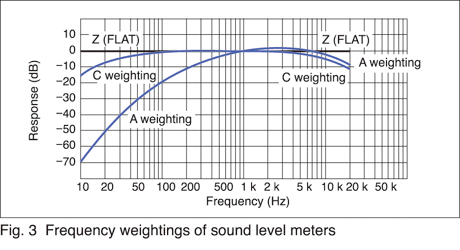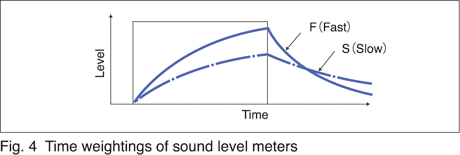NOISE AND SOUND LEVEL METERS
NOISE AND SOUND LEVEL METERS
Sound and Noise
What is commonly called "sound" is actually vibrations of air. Various objects, when rubbed or tapped, can become sound sources. The vibration of the sound source object causes the adjacent air to vibrate and these vibrations are transmitted to the ear where they are perceived as sound.
In our everyday environment, there are many different kinds of sounds, but humans do not respond to all of these.
Rather, we subjectively make decisions and focus only on certain sounds that we want to hear.
Other sounds that are not important, often inconvenient or disturbing, are sounds that are undesirable or unnecessary. Such sounds are called "noise".
Rather than containing certain physical properties, what defines noise is a subjective characteristic that is specific to the listener. Sound that is too loud, unpleasant, or that draws attention in a certain direction is commonly judged as noise.
to the listener. Sound that is too loud, unpleasant, or that draws attention in a certain direction is commonly judged as noise.
Physical and Sensuous Value of Sound
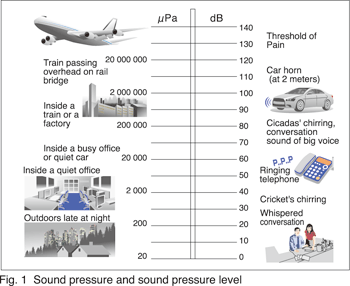
What is commonly called "sound" is actually vibrations of air. Various objects, when rubbed or tapped, can become sound sources. The vibration of the sound source object causes the adjacent air to vibrate and these vibrations are transmitted to the ear where they are perceived as sound.
In our everyday environment, there are many different kinds of sounds, but humans do not respond to all of these.
Rather, we subjectively make decisions and focus only on certain sounds that we want to hear.
Other sounds that are not important, often inconvenient or disturbing, are sounds that are undesirable or unnecessary. Such sounds are called "noise".
Rather than containing certain physical properties, what defines noise is a subjective characteristic that is specific to the listener. Sound that is too loud, unpleasant, or that draws attention in a certain direction is commonly judged as noise.
to the listener. Sound that is too loud, unpleasant, or that draws attention in a certain direction is commonly judged as noise.
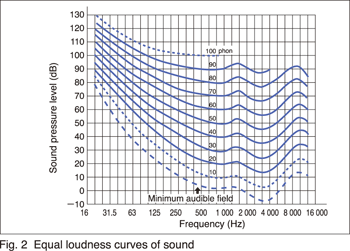
The sensitivity of the human ear differs depending on the frequency of the sound.
The same sound pressure can be perceived differently at different frequencies. When a certain sound
is perceived equal to the sound pressure level PdB at 1 kHz, the loudness level of that
sound is said to be Pphon.
Figure 2 shows the relationship between the loudness level of a pure tone and its frequency. The curves in this graph are called equal loudness curves.
As can be seen from the graph, the physical magnitude of a sound and its subjective magnitude are not the same. Rather, there is a complex relationship between the two.
Sound Level and Sound Level Meter
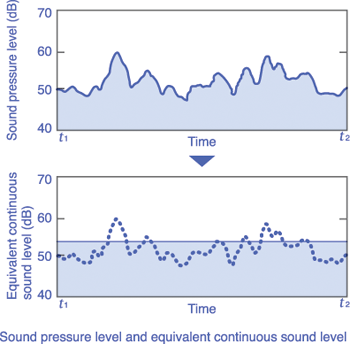
Sound Level Meter is a device for turning physical properties of sound into numeric values.
Psychological, physiological and subjective aspects cannot be measured.
A reverse curve corresponding to the equal loudness curve at 40 phon is applied to the sound pressure (this is called "A"-frequency weighting). The resulting level is called A-weighted sound level and is expressed in dB.
Standards of Sound Level Meters
Sound level meters are divided into two categories: Class 1 and Class 2. There is a
difference in performance between these classes.
Perfomance specifications and test methods of sound level meters are specified in the international standards IEC 61672 series. Two performance categories, Class 1 and Class 2, are specified in the standard.
Basically, specifications for Class 1 and Class 2 sound level meters have the same design goals and differ in the tolerance limits. Tolerance limits for Class 2 specifications are greater than, or equal to, those for Class 1 specifications.
Some common terms used having with special meanings and relating to sound level meters are listed below.
|
① Frequency weightings |
The different sensitivity of the human ear at different frequencies is represented by the "A" and "C" weightings as shown in Figure 3. When measured with the "A" weightings, the result is close to the subjective sound level impression. When measured with the "C" weightings, the result is close to the sound pressure level (physical quantity). |
|---|---|
|
② Time weightings |
Sound level is obtained by averaging the signal corresponding to the sound pressure raised to the second power. Two kinds of time weightings are used, which differ in the time constant used for averaging: F (Fast, time constant 125 ms) and S (Slow, time constant 1 s). For normal noise measurements, the F-time weighting is used. In some countries, a third characteristic called Impulse is used for the measurement of impulsive and impact noise. |
|
③ Type approval and test certification (In Japan) |
Type approval refers to a process by which the government tests sound level meters provided by domestic manufacturers and importers and ascertains that their construction and performance is in accordance with the stipulations of the Measurement Act. When a sound level meter model has been type approved, most items can be omitted during testing for individual product certification. |
Sound Level Meter Types
Many different kinds of sound level meters exist.
The optimum device to be Chosen will depend on the purpose of the measurement, the required accuracy, and the data processing method that is to be employed. Some of the main categories are listed below:
|
① Sound Level Meter Class 1/Class 2 (NL series) |
These are the most common types of sound level meters, whose performance are defined by the applicable standards. The difference is in accuracy. |
|---|---|
|
② High-Precision Measuring Amplifier |
A wide range of frequency and level range settings make this product suitable for many different measurements |
|
③ Sound Level Meter with Analysis Functions (NA-28, NL-63 with NX-63RT/43FT, NL-53/43 with NX-43RT/43FT) |
These are portable sound level meters with real-time analysis or FFT analysis functions. |
|
④ Environmentel Noise Monitor |
This type of device performs data processing according to standards and regulations. It serves for measurements as well as for observation and monitoring of noise. |
|
⑤ Sound Level Meter (With low-frequency sound measurement function). (NL-63 with NX-63RT) |
Allows G-weighted sound level measurement in conjunction with 1/3 octave real-timeanalysis. |
|
⑥ Sound Level Display |
Designed for mounting in outdoor urban locations, this type of device can display the ambient sound level at a specific point. |

